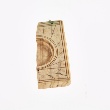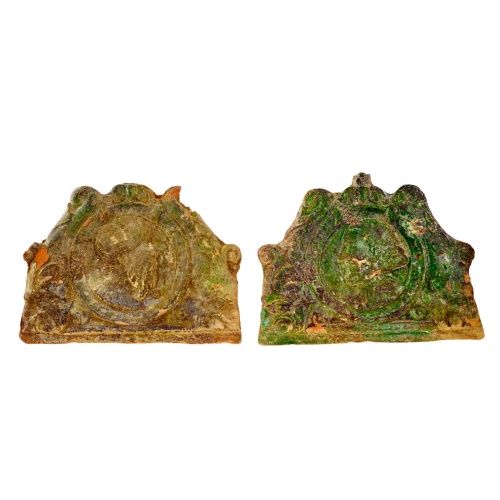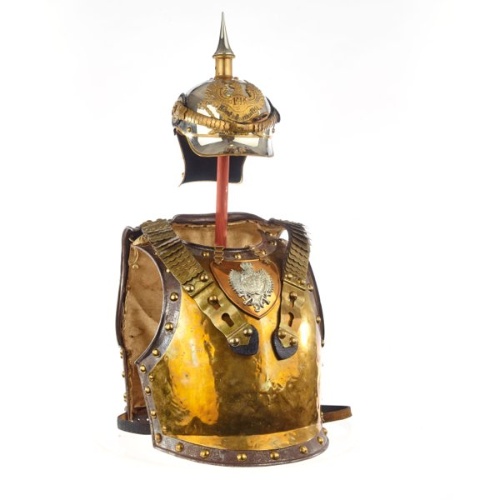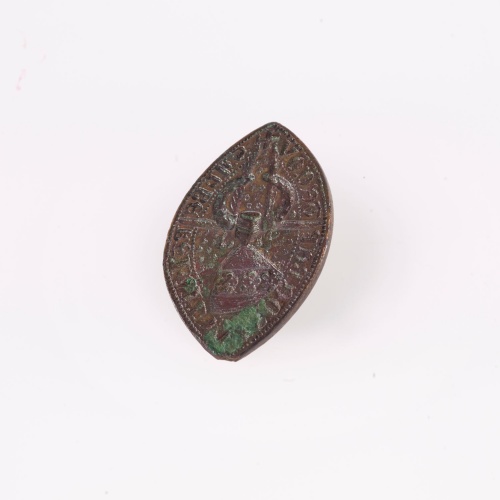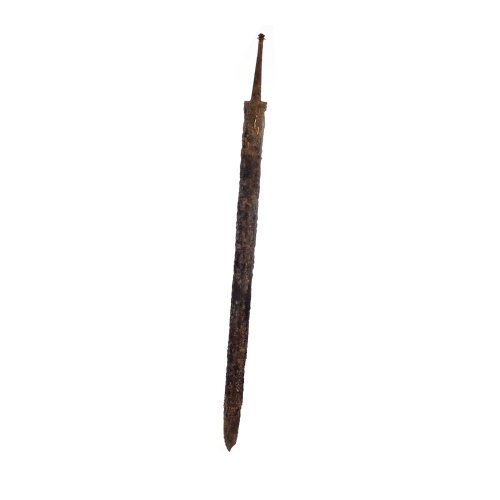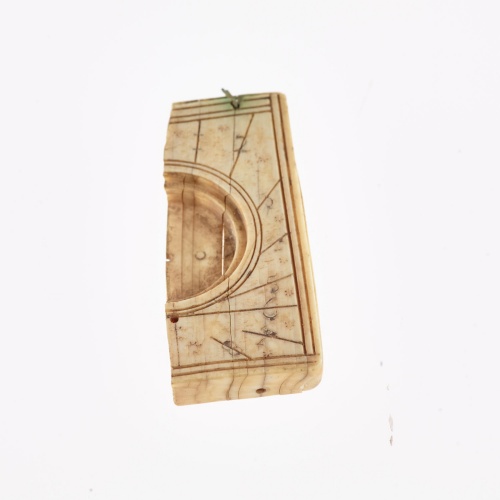Pocket sundial
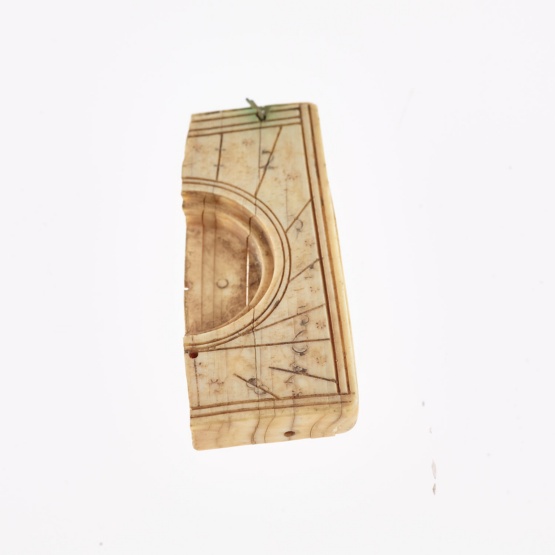
- ivory
- around 1550
- length: 5.7 cm
- on loan by the State Office for Culture and Heritage in Mecklenburg-Vorpommern
The fragment is the base plate with indentation for the compass and markings for the horizontal sundial. There is a metal eyelet on the right-hand upper edge, i.e. a wire that once connected the sundial with its lid. Similar finds suggest that there may have been a dial on the inside of the lid – known as a vertical sundial. The digits 1 to 8 are arranged clockwise, interspersed with ornamental stars. Two holes, produced manually, are prominently visible. The [...] situated in the centre of the indentation is used to attach a metal pin to support the compass needle. A compass thread is fixed in the hole on the outside of the indentation. The thread tightens between the base plate and the lid when the compass is opened. Provided the compass is used to align the dial correctly and in a horizontal position, the thread casts its shadow along the same hour on both the vertical and the horizontal dial. In its intact state, a lock was fitted to both the base plate and the lid of this find.
More elaborately manufactured pieces are said to have also contained lists of cities with their geographical latitude or the lunar calendar.
Overall, the historical and archaeological testimonies from Pasewalk paint a picture of a city that until 1630 was dominated by trade and commerce, in which grain merchants benefited from lively dealings across the river Ucker and the trade routes that crossed here on the border between Pomerania and Brandenburg. Extensive trade privileges and close ties to the Hanseatic League brought prosperity to the city, as evidenced by the discovery of an ivory pocket sundial in the churchyard of St Mary's in Pasewalk. The portable and folding chronograph can only have been owned by the city's elite, who were able to afford this practical and valuable invention.
Folding compass and sundials had been known in Europe since the mid-15th century, and they remained in widespread use into the 17th century. Later examples were largely made of wood and decorated with printed paper. Augsburg and Nuremberg were the centres of their production. The guild of compass makers was also responsible for the manufacture of sundials, as stated in the Nuremberg guild charter of 1535.
Text: A. H.
